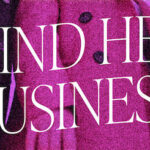Trisha Okubo
Founder
-
Mind Her Business

“I love that I get to transform ideas in my head into real objects that make life easier.”
That’s how Trisha Okubo (she / her) feels about designing jewelry for Maison Miru, a brand on a mission to simplify accessorizing and create unisex pieces that flatter all genders, ages, and body types.
Here, the Japanese American shares how a 3-month road trip inspired her business, how she’s supporting the LGBTQ+ community, and why hard work beats talent if talent doesn’t work hard.
Why’d you decide to get into jewelry?
I wanted to make the world’s most comfortable earrings—ones that were affordable, safe for sensitive skin, and ready-to-wear. I wanted earrings that you could live in, even while showering, working out, and sleeping. After 3 years of development and over 50 prototypes, we made our signature Nap Earrings, which are designed to be worn 24 / 7.
What’s your connection to the name Maison Miru?
I’m Japanese American and wanted a name evocative of my heritage. Miru is the Japanese word for “to see.” Eyes are a big part of our brand, which serves as a reminder to open them and see the world in a new way. I want to invite people to play with their jewelry, unlock their creative spirit, and be free.
What’s your favorite part about making jewelry?
I’m a Stanford engineer who has always been drawn to aesthetics, so I love that jewelry captures both sides of me. But my favorite thing about it is that it loves you even if you’re not a sample size—I’m certainly not! That’s why I make jewelry for everyone regardless of gender, age, or personal architecture.
What are some of the challenges that come with making unisex jewelry?
We aim to find a balance that’s universally flattering, but sometimes “one size fits all” doesn’t work, so we tend to make our shapes in a few different sizes. Our Halo Oval Hoops, for example, come in Baby and Bold.
And what are some ways you’re giving back?
My personal ethos is to leave the world a better place than I found it, so we give back in ways that resonate with our values of creativity and inclusivity. That’s why give back a percentage of sales from our Rainbow Collection to Queer|Art, to amplify the voices of a population that’s been historically overlooked.
What advice would you give young female entrepreneurs trying to make it in a saturated market like the jewelry business?
Whatever you decide to do in life, do something that matters. Find the intersection of what you love, what the world is missing, and what you can bring into the world—the center of this venn diagram is where you’ll shine. Then take action. This is by far the most important step. So much of success is execution. Start now and keep going.



